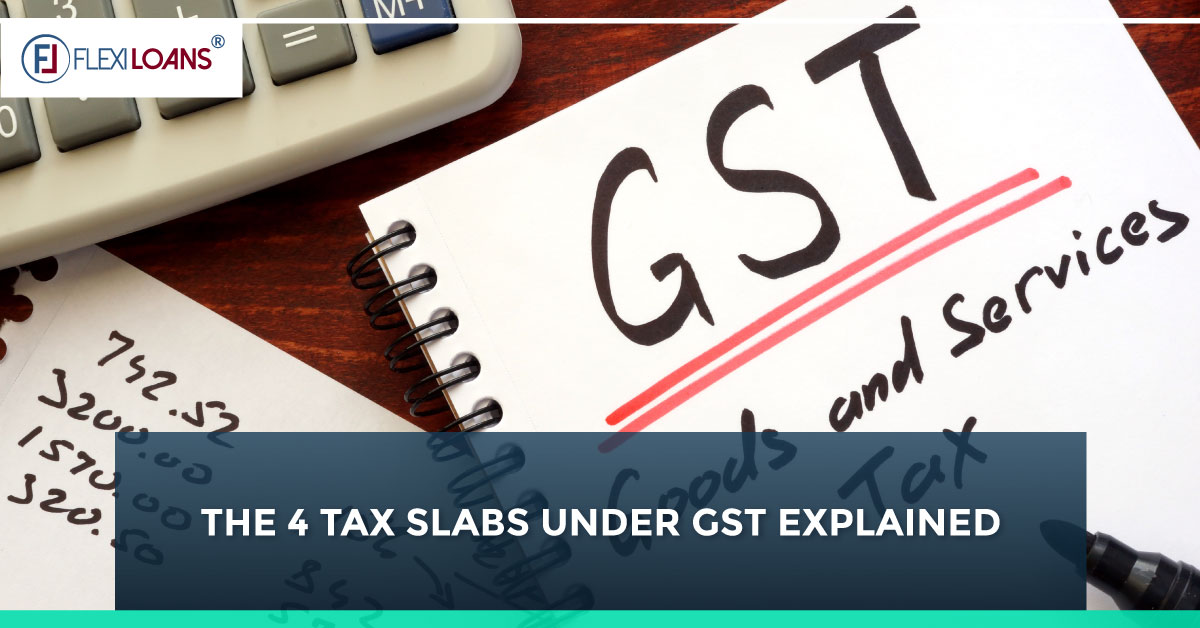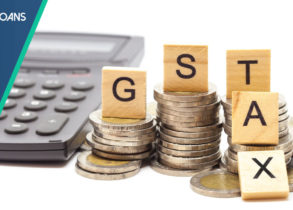Jun 30, 2017

Implementing the Goods and Services Tax (GST) in India was a major step in the tax system. It aimed to simplify the tax structure that had formerly been rather complex for the general public, the Government, and corporations. The GST tax slab rates have been updated periodically under the GST Council’s judgments.
Numerous state legislatures and industry associations have kept their rights to express their views on tax rate revisions. Currently, the GST rate in India is designed so that necessities are taxed less than luxury services and products. This article will describe the rate schedule and tax slabs.
Types of GST
There are three primary types of GST:
CGST
Central Goods & Services Tax is levied on basic goods and services, and tax rates are subject to significant modification. The central Government receives 100% of the income earned. According to the Central Goods and Services Tax Act 2016, it is the centralized component of GST that encompasses the majority of central taxes, including central sales tax, central excise duty, service tax, and additional customs duty.
SGST
State Goods & Services Tax is a collection of numerous rates and taxes levied by the state combined into a single unified tax structure. It primarily consists of numerous taxes, including Entertainment Tax, Lottery Levies, State Sales Tax, and Luxury Tax. The State Government retains ownership of the income earned here.
IGST
It is levied on the supply of goods and services between states. According to Article 269A of the Indian Constitution, the IGST is levied on inter-state trade and commerce operations that entail the transport of goods. Revenue is remitted to the Government of India.
Input tax credit under GST Slab Rates
Input tax refers to taxes paid on the input, while input tax credit refers to the fact that you can subtract the amount of input taxes paid and pay just the balance when you pay tax on the output.
For instance, when we purchase products from a dealer, we must pay the dealer the applicable GST, but we gather the applicable GST percentage from the consumers when we start selling the items. Then you may alter the amount of input tax to match the amount of output tax, and one must pay the difference. Suppliers, producers, distributors, and retailers can claim tax credits for the GST rate list paid on input expenses.
GST Tax Slab Rate in India
Authorities have determined GST tax rates by the requirement of the items and the rate factors of those items. The following table illustrates the various tax brackets for several basic products. As one might expect, an effort has been made to ensure that items of fundamental necessity reach the populace at the lowest possible tax rates.
GST rates for Goods
| Tax Rate Slab | Products |
| 28% | Small cars, consumer durables like ACs and refrigerators |
| 18% | Personal Care items like hair oil, toothpaste, soaps |
| 12% | Computers, processed food items, vegetables, and nuts |
| 5% | Household items like sugar, tea, spices, coffee, packed paneer, edible oil |
| 0% | Foodgrains like rice, wheat, milk, curd, lassi, etc |
GST rates for services
| Tax Rate Slab | Products |
| 28% | Entertainment events such as amusement facility, water parks, theme parks and 5-star hotels |
| 18% | Food or drinks at restaurants with a liquor license and Outdoor catering |
| 12% | Food /drinks at restaurants without AC and Chit fund services |
| 5% | Railways, passengers, air travel, and tour operator services |
| 0% | Education services, Health services |
There are four different types of GST rates in India
1. GST Slab of 5%
Sugar, oil, spices, coffee, coal, fertilizers, tea, ayurvedic medications, agarbatti, sliced dry mango, cashew nuts, chocolates, handmade carpets, lifeboats, fish fillet, unbranded namkeen, and life-saving pharmaceuticals are all included under this slab.
Railways, airlines, takeaway meals, AC and non-AC restaurants, hotel rooms with a rate less than 7,500, and special flights for pilgrims all fall within this category.
2. GST Slab of 12%
Cell phones, sewing machines, umbrellas, and jewelry boxes are all covered underneath this slab, as are processed goods such as frozen meat, fruit juices, butter, cheese, and ghee. This category includes business class airline tickets and cinema tickets for under ₹100.
3. GST Slab of 18%
Hair oil, safety glass, pasta, pastries, ice cream, mineral water, hair shampoo, oil powder, water heaters, washing machine, detergent, scent sprays, leather clothing, cookers, oil powder, cutlery, binoculars, artificial flowers, wristwatches, suitcase, briefcase, shaving, after-shave, furniture, stationery items, mattress monitors, television screen, lithium-ion battery
This slab includes restaurants within hotels with tariffs greater than 7,500, actual hotel bills less than 7,500, and movie tickets greater than 100.
4. GST Slab of 28%
Over 200 products are covered by this slab, including automobiles, cigarettes, durable consumer goods, high-end motorbikes, pan masala, weighing machines, and cement.
The services covered by this category include horse racing, casino gambling, and the real cost of a hotel stay exceeding ₹ 7,500. Semi-polished and cut stones are subject to a 0.25 percent surcharge.
Current GST Slabs in India
1. GST on Loans
When obtaining loans from a lender, it is important to keep in mind that GST is only collected on the processing and other fees paid to the lender, never on the principal repayment or interest rate. Other expenses include loan processing fees, prepayment penalties, and a few more. As a significant portion of loan repayment is made up of principal and interest, the impact of GST on loans is insignificant. Previously, service tax was collected on loans; however, service tax has been phased out and replaced with GST, which will now be imposed on loans. The Service Tax rate was 15%, whereas the GST rate is 18%.
2. GST on Automobiles
Following the inclusion of automobiles in the GST system, the GST rate on automobiles has been set at 28% for all personal use vehicles powered by a petrol/diesel engine. Furthermore, in contrast to the GST, a composition cess is levied on vehicles that exceed the GST rate. Thus, the entire GST rate for cars ranges from 29% to 50%. However, automobiles powered by cleaner technology like fuel cells (including hydrogen fuel cells) and electric vehicles are taxed at a lower rate.
3. GST on gold
Following the implementation of GST on gold-based commodities such as gold jewellery, the current GST rate on gold is 3%. However, if the manufacturing of gold jewellery is outsourced to a job worker, a 5% GST fee applies. It can, however, be claimed as an input tax credit (ITC) by the jeweller, with the purchaser of gold jewellery paying just a 3% GST fee on the final bill.
4. GST On Real Estate
GST is only applicable to real estate acquisitions made while the property is still under development. Until March 31, 2019, the GST rate on such business or residential transactions is 12%. GST rates on residential real estate will be 5% for non-affordable housing properties and 1% for affordable housing properties beginning April 1. GST is not applied when acquiring a ready-to-move-in home.
5. GST on Food
Food items, particularly fresh food, are often exempt from GST. However, packaged goods and semi-processed/processed foods are subject to a GST charge ranging from 5% to 18%. While no food items are presently subject to the maximum 28 per cent GST rate, several typical food items such as chocolates and baked goods such as cakes are subject to the 18 per cent GST rate.
Upcoming products in GST Rates Slab
The Government is pursuing innovative strategies to bring some items under the GST system. As former Finance Minister Arun Jaitley suggested, some items may be subject to GST to reduce GST rates on others. The following are some of the major goods that may be subject to the GST rate slab:
- Petroleum products- Petrol and Diesel
- Land
- Electricity
- Others
How GST Rate Impact the Economy
GST was a game-changer for the Indian economy when it was introduced and implemented. Putting the net price of all products and services under a single taxing structure proved to be a game-changer. The following are some of the significant economic impacts of GST:
- Single/Uniform Tax Regime:
There were many taxes at various stages in the supply chain before the introduction of GST. Now the process has become easier for taxpayers due to the universalities of GST.
- Increased Exports:
The GST has reduced manufacturing costs, which has aided in bringing export price competitiveness in the worldwide market.
- Increased Competition:
The GST has lowered the cost of products and services, resulting in more competition and a lower tax burden for the ultimate consumer. It has also aided in the expansion of the production’s scope.
- Simple Structure:
The tax computation has been simplified thanks to the unified taxation system. It has saved a lot of time and effort by calculating tax based on basic slabs rather than numerous tax systems.
Conclusion
GST has lived up to the expectations of numerous businesses in India as watershed tax reform. Numerous sectors have been impacted, mainly positively. The general public is fairly delighted with the latest tax laws that have been tailored to the specific needs of the items.
Regular GST Council meetings have effectively brought forth necessary reforms that would benefit various businesses and citizens’ demands. The GST tax slabs have been significantly reduced to ensure that most people obtain essential goods and services with the least amount of tax. One must maintain track of updated GST listings to maintain track of the tax rates applicable to various things.







